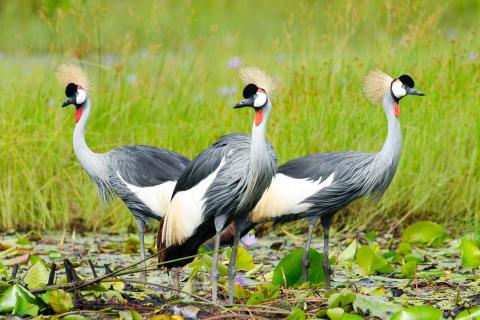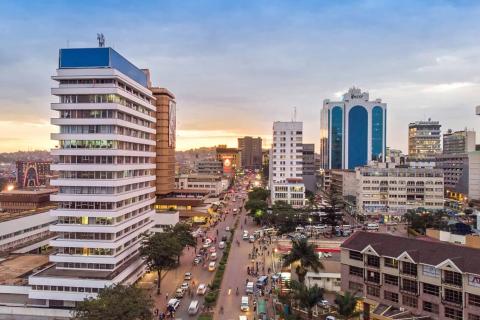Uganda is like a big-picture book of nature. Imagine vast grasslands that stretch out like a giant, soft carpet, hugged by tall, craggy mountains on one side and peaceful lakes on the other.
The trees here aren’t just trees—they’re like skyscrapers for rare primates, monkeys, and birds, standing tall and proud, shading the land with their green leaves and colorful flowers.
Now, picture the animals. You’ve got big ones like mountain gorillas, elephants, and lions strutting around like they own the place. Giraffes, with their long necks, seem to reach for the sky. And don’t forget about the hippos lounging in the rivers, looking like they’re smiling underwater.
In Uganda, it’s not just one type of scenery—it’s a whole mixtape. There are dense forests with vines hanging everywhere, hiding secret creatures like chimpanzees swinging through the branches. And there’s the Nile, where crocodiles soak up the sun like lazy sunbathers.
The parks here aren’t like regular parks with swings and slides; they’re like nature’s own castles. Queen Elizabeth National Park and Murchison Falls are like treasure chests full of Uganda’s wild gems. Bwindi Impenetrable National Park, as its name suggests, is one of the two last sanctuaries for mountain gorillas, 10 other primates, over 120 mammal species, plus over 400 plant species and 350 bird species.
Every season, birds take to the skies in Uganda. It’s like a massive parade of colors and sounds—birds chirping, wings flapping, painting the air with their flights.
When you see Murchison Falls, it’s like standing in front of a giant faucet of water, where the Nile River rushes through a narrow gap, spraying mist everywhere. It’s like nature’s fireworks, a show that never stops.
In Uganda, people and animals live side by side, like old friends who understand each other. They respect each other’s space, making sure both can live their lives without stepping on toes. It’s a dance where both partners move together, keeping the rhythm of nature alive.


